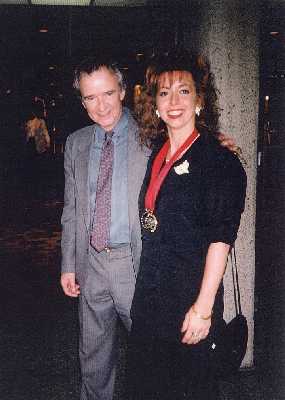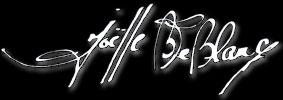
« Like the deep-sea diver, the mission of the artist, seismograph of the heart, is to go deep within the heart’s feelings. Living creation and witness to an interior journey, the artist’s expression renders the subject a simple pretence to his visual poetry ». This is how Joëlle B. Leblanc summarises her own approach, by introducing us at the same time to her art which stems from both dance and graphic arts.
Born in Montreal in 1962, Joëlle grew up in an artistic environment. Encouragement, trips, courses and books stimulated her natural love of art.
An excellent drawer, she developed her engraving technique and excels at and is particularly fond of contrasts. She also developed a personal inking technique that enables her to further detail the subject’s outlines. What makes this artist so exceptional is her ability to harmonise three techniques that she masters as well as she does etching.
An excellent drawer, she developed her engraving technique and excels at and is particularly fond of contrasts. She also developed a personal inking technique that enables her to further detail the subject’s outlines. What makes this artist so exceptional is her ability to harmonise three techniques that she masters as well as she does etching.
More and more, her peers recognise her talent. Since 1994, she has won several national and international prizes and has received grants from the O.F.Q.J. (Office franco-québécois pour la Jeunesse) and the C.M.A. (Conseil des métiers d’art). She has represented Quebec in Carcassonne, France and at the Kolin Museum in the Czech Republic where she received an honourable mention for her ink works. More recently, Joëlle received International first prize in visualarts, in the etching and drawing category. She was offered a stage at ” Atelier 17 ” (Conterpoint), a Paris workshop internationally renowned for its Hayter etching techniques.
She now feels that she has discovered the mystery of one of the most beautiful etching techniques, as evidenced by her recent works.
This very special technique consists of four general movements.
It is the study of textures and colours that holds a very special place at thecentre of a visual perspective.

Comtempory Art Museum founder
International art critic
Art historian
Doctorat – visual arts (la Sorbonne Paris)
Thanks to time and various acid baths the several different surface levels of the bites in the metal plate will produce different colour effects depending if the ink is applied below the surface (intaglio) or on the surface. To take advantage of the multiple surface levels, it is necessary to use hard, semi-hardor soft, etc. rollers… these rollers will help the colours penetrate the grooves or stay on the surface.
By applying the ink several times with different rollers, you get various full colours or a gradation of colours. Blocking non-image areas with paper will then balance and retain several colours every time the ink is applied with the roller.
The key to this process is without a doubt William Stanley Hayter’s discovery.The Hayter technique is based mostly on the viscosity of oil colours. Briefly,when applied on the metal plate, an oilier ink surface forces back the layer of ink that is trying to superpose itself. In order for both colours to remain even,viscosities (oils) must be either identical or one must be less oily at the initial application of the ink, and this, regardless of the next colour(s). From this emerges the exceptional richness of colours obtained by superimposition. Please note that the work is even more interesting when the continuous gradation of colours is combined with the gradation of viscosities.
Beneath the subtle mixture of shadows and lights, Joëlle B. Leblanc creates an atmosphere to receive the emergence of the deepest movement, the movement of life which appears in the sensual dramatics of the flesh, whose body becomes the mask, the medium, the material.
